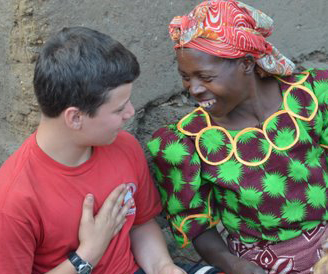
A group of Nepali men approached speaker Sarah Lanier with tears in their eyes. Why, they wanted to know, did no one tell them earlier how directly they had to speak with European colleagues who were visiting Nepal as guests?“[W]hen they asked us to take them on treks into the Himalayas, we would, of course, say yes, as our culture requires….We didn’t know they didn’t understand our culture, nor that we were really saying ‘no.’ We would have to leave our families without provision, often for a month at a time….If we had only known these concepts about the differences in the way we think and communicate, we would have been spared pain and broken relationships.”
Generalizations may not always prove to be accurate, but they can help us cross cultures. In Foreign to Familiar: A Guide to Understanding Hot and Cold Climate Cultures, author Sarah Lanier generalizes the contrasts between hot and cold climates, and these generalizations give helpful handles for grasping basic cultural similarities and contrasts. Lanier has lived and traveled extensively in the Middle East, Europe, Africa, Latin America and the United States.
Lanier calls Southern hemisphere cultures “hot” (especially rural or tribal societies), with everything based on relationships, even in the work setting. She terms most Northern hemisphere cultures, where people hold efficiency as their highest value, as “cold.” Starting in chapter 1, she explores “hot” and “cold” contrasts in cultural characteristics such as:
· Relationship vs. task orientation
· Direct vs. indirect communication
· Individualism vs. group identity
· Inclusion vs. privacy
· Different concepts of hospitality
· High-context vs. low-context cultures
· Different concepts of time and planning
Lots of theories try to explain how and why climate affects culture. Maybe it’s agrarian- vs. industrial-based economics. Maybe cold weather keeps people indoors more and they’re less dependent on their neighbors. Maybe hot weather promotes more interdependence between neighbors.
Whatever the reasons for climate affecting cultures, this book helps us understand our audience. Whether we’re building relationships with cross-cultural friends in our birth country or living in a different country, the hot- and cold-climate contrasts can help us build bridges of understanding.
Try Foreign to Familiar, and ponder which hot- or cold-climate characteristics most accurately reflect Kingdom values.
The brevity and readability of Foreign to Familiar make it seem deceptively simple. But it’s a profound read.